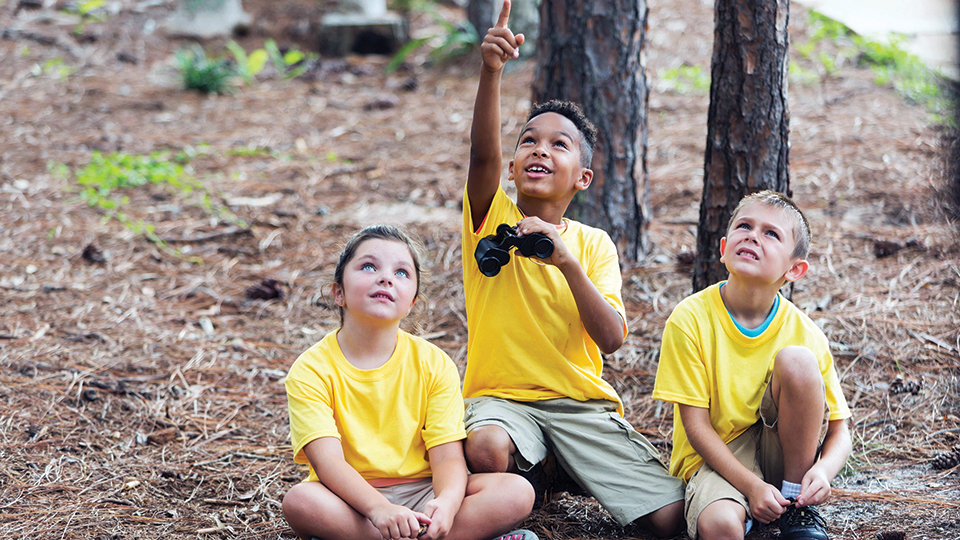
Ever heard someone joke that recess was their favorite part of school? In reality, that’s not so surprising. Because of the absence of teacher direction, children are free to choose how they will interact in the outdoor environment, often experiencing a rare but great sense of empowerment. They can run, climb, raise their voices, and pretend.
Adults might reflect on how much things have changed since the days of walking ourselves to school and playing unsupervised outside all day. I indeed have my own memories of being an insistent bare-footer who loved to roam the vacant fields near our home where I learned the names of indigenous Colorado plants like yucca and sage and developed the foresight to spot storms approaching over the mountains.
Since then, especially in Colorado, our population has exploded, media devices take over a lot of our attention, and green spaces are either overcrowded or vanishing. It’s hard to get to the mountains with all the traffic, but that doesn’t mean we should give up on introducing our children to the wild outdoors. With our wonderful weather, even a city kid can observe ladybugs crawling on grass and appreciate all that outdoor play has to offer.
During outside time at my preschool, the “curriculum” would turn entirely over to the children’s desires. They manufactured “boats” out of wood scraps and sticks, created “campfires” in the rocks, and devised their own little worlds, returning to them every time we went outside. When we spend time outside, all of our senses are activated. Even the infinite depth of choices on the internet cannot engage all of our senses. Growing brains and bodies (as well as full adult bodies) benefit greatly when all senses are used, helping our brains to grow the building blocks for more complicated learning.
Robin Moore, an expert in the design of learning environments, asserts that “natural settings are essential for healthy child development because they stimulate all the senses and integrate informal play with formal learning.
Robin Moore, an expert in the design of learning environments, asserts that “natural settings are essential for healthy child development because they stimulate all the senses and integrate informal play with formal learning. Those multisensory experiences in nature help to build the cognitive constructs necessary for sustained intellectual development.”
Young children are masters of observation outside when we allow them to be. We would walk just one block adjacent to our preschool and it might take almost an hour. The children would kneel down on all fours to observe trains of ants building with tiny dirt pieces between the cracks in the sidewalk. They would want to smell every flower and try to see every bird that they heard.
It is vital that children have this type of unstructured play time outdoors. The unstructured part is one of the most important pieces to begin with. So it doesn’t count as much if your child went to soccer practice, went downhill skiing with you, or on a field trip with the teacher. It is the ability to allow nature to affect us. To see how it makes us feel and then inspires us to do something cool, like pretend to be an explorer who has to live off the land, or count how many different kinds of purple flowers we can find.
In his book, “Last Child in the Woods,” Richard Louv points out that children’s first experiences outdoors teach them about the elements and how to adapt to and with them. “Children create learning experiences with the elements by playing with sand and water, throwing rocks or observing food being cooked over the fire. They hone their labeling, classification and ordination tools and the functions of each element.” Experiencing the outdoors this way is much more effective than having someone or something tell you about it! Additionally, as an individual becomes more knowledgeable about nature, they learn to be more responsible inhabitants of the planet.
First experiences in nature, up to age six, have the strongest influence on our development. It is not hard to nurture this by allowing your child unstructured time outside. I started my son on hikes when he was around age three. He always brought a train clutched in his hand and as we would meander up a trail, he would inevitably find a big rock to climb and then move his train around it, creating his own imaginative scenario in the natural setting. I would get frustrated at how little of the trail we might cover, but eventually I surrendered to the fact that this was how my kid was going to connect with nature on this hike. As time marched on and his outdoor experiences broadened, he has developed a connection in nature that is uniquely his very own.
We need to recognize those moments when our children discover nature on their own and either leave them to it or join in to celebrate and foster their discoveries.
Jill Carstens taught for 30 years and now enjoys writing this column as well as organizing neighborhood events supporting the local arts, community and sustainable ideas.
You can see some of what she is organizing at CurateLocally.com or email her with comments or story ideas at jill@denvernorthstar.com.

Be the first to comment